8 April 1778 Wednesday
Vases, Candelabra, Grave Stones, Sarcophagi. Tripods, Lamps and Ancient Ornaments volume II
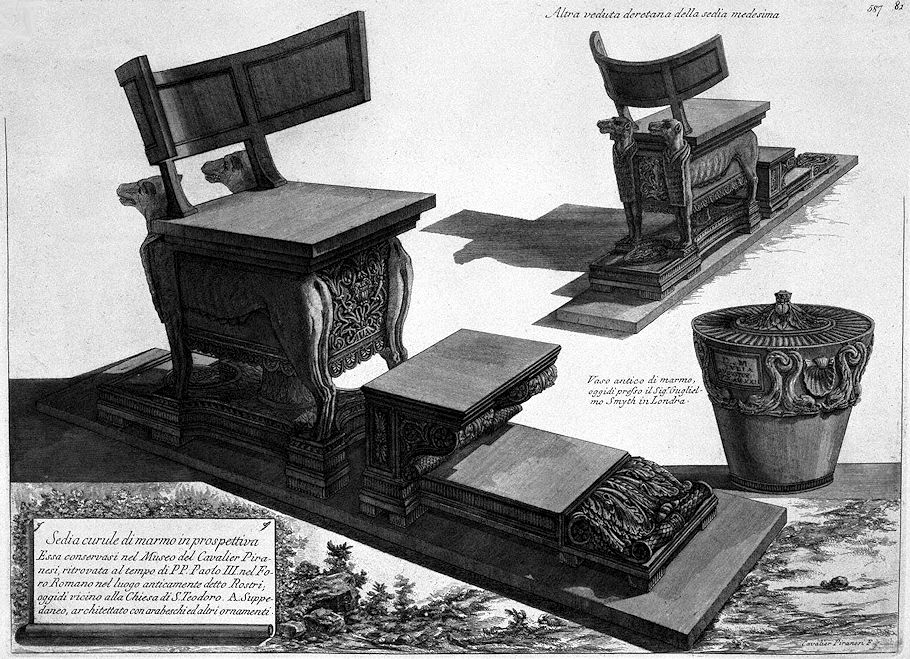
Marble curule chair in perspective
It is kept in the Cavalier Piranesi Museum, found at the time of PP. Paul III in the Roman Forum in the place formerly called Rostri; today near the Church of S. Teodoro. In Suppedaneo, designed with arabesques and other ornaments.
Another rear view of the same chair
Ancient marble vase, now held by Mr William Smyth in London.
Cavalier Piranesi F.
26-27 y.o. Francesco Piranesi 1785
Monumenti degli Scipioni
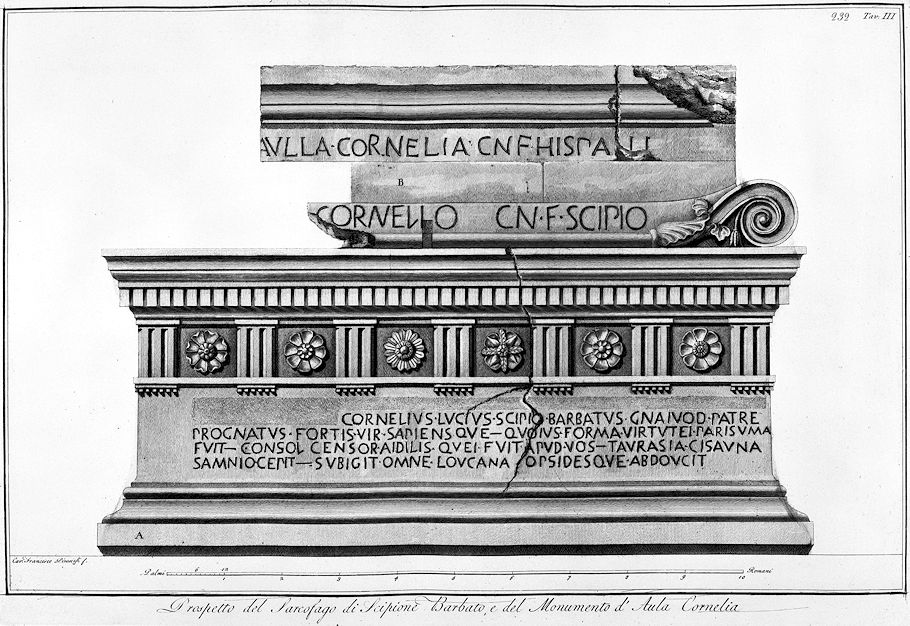
Prospectus of the Sarcophagus of Scipione Barbato, and of the Monument of Aula Cornelia
Cav. Francesco Piranesi f.
45-46 y.o. Francesco Piranesi 1804
Calcography of the Piranesis
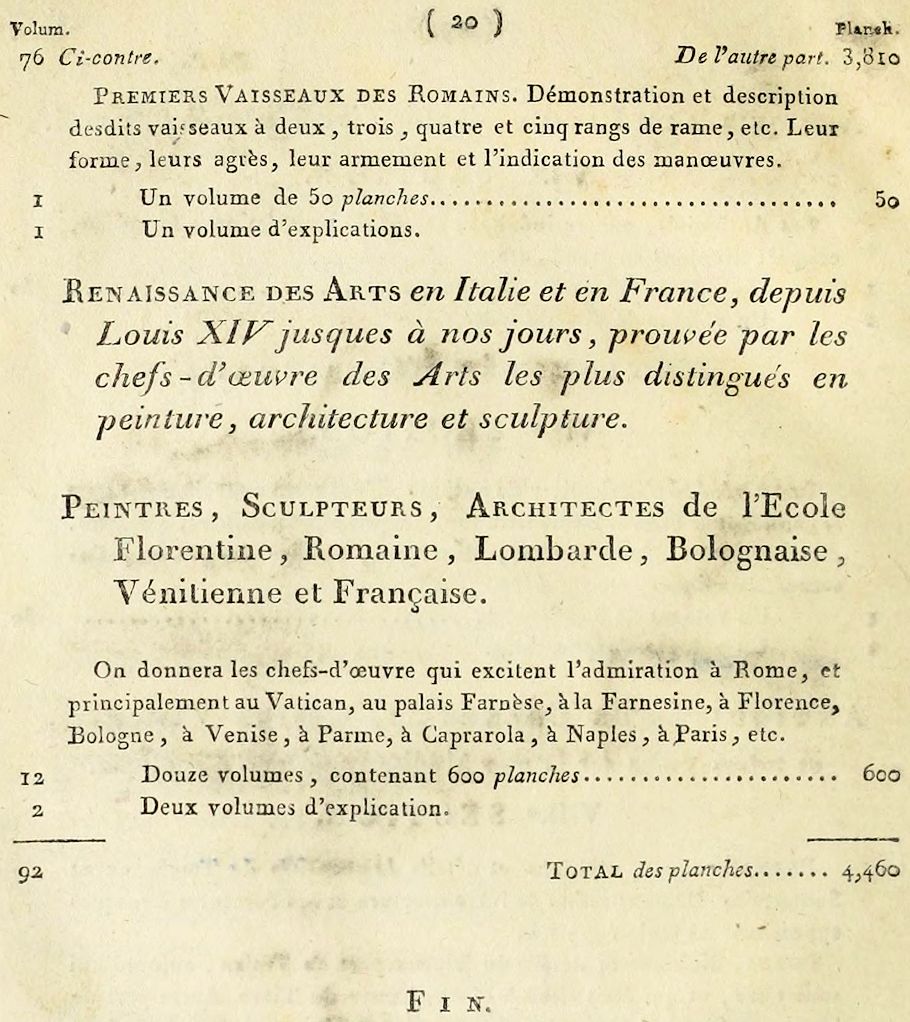
First Ships of the Komains. Demonstration and description of the said vessels with two, three, four and five rows of oars, etc. Their form, their apparatus, their armament and indication of manoeuvres.
A volume of 50 plates
A volume of explanations.
Renaissance of the Arts in Italy and France, from Louis XIV to the present day, proven by the most distinguished masterpieces of the Arts in painting, architecture and sculpture.
Painters, Sculptors, Architects of the Florentine, Roman, Lombard, Bolognese, Venetian and French schools.
We will give the masterpieces that excite admiration in Rome, and mainly in the Vatican, in the Palazzo Farnese, in the Farnesina, in Florence, Bologna, in Venice, Parma, Caprarola, Naples, Paris, etc.
Twelve volumes, containing 600 plates
Two volumes of explanation.
7 April 1812 Tuesday & 8 April 1812 Wednesday In Town
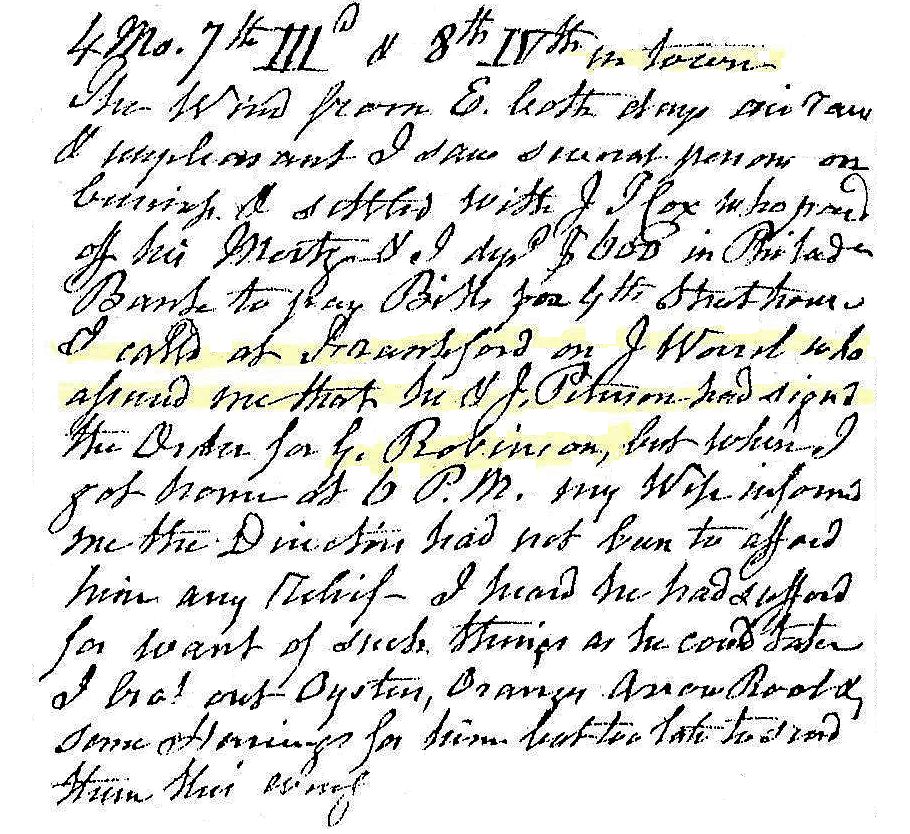
The wind from E both days, air raw and unpleasant. I saw several persons on business and settled with J T Cox who paid off his mortgage and I deposited $600 in Philadelphia Bank to pay bills for 4th Street house. I called at Frankford on J. Worsel[?] to assure me that he and J. Peterson had signed the order for G. Robinson, but when I got home at 6 PM my wife informed me the Directors been to afford his any relief. I heard he had suffered for want of such things as he could take. I brought out oysters, oranges, arrow root and some herrings for him but too late to send this evening.
7 April 2001
Re: mil
I have to start by stating I know virtually nothing about the Etruscans and their relation to Rome and the Italian peninsula. Regarding the Roman (mythological) origins of Rome I do have some knowledge, however.
It began with a rape, specifically a divinity, Mars, raping a (Vestal) virgin, Rhea Silvia. [Perhaps an investigation into the history of the Vestal Virgin cult may reveal Etruscan origins?]
This rape engendered twin brothers, Romulus and Remus.
Then came fratricide in a fight for domination. Romulus killed Remus and thus the 'Eternal City' is hence known as Rome (rather than Reme).
To populate his namesake city, Romulus devises a massive date rape, culturally depicted as The Rape of the Sabine Women. [August 18, same date as the feast of St. Helena -- this is the only clue I'll provide now as to the 'Roman' Christian inversion of all the 'facts' here outlined.] So here we have the son reenacting the father via the act of rape all in the cause of procreation of citizenry.
A year or two after the rape of the Sabine women, the Sabine men decided to avenge their daughters and attacked Romulus and his urbs. Romulus remained victorious, and paraded his enemies armor to certify his 'triumph', hence the many times reenacted Roman Triumph.
So goes the 'myth' of the origins of an 'eternal' city and then the origins of an empire. In concise terms it's rape, fratricide, rape reenacted, triumph, triumph reenacted [and then Imperial Rome as a whole is reenacted by Roman Christianity, yet in an inverted fashion].
8 April 2005
modernity/post-modernity
Does it say anywhere that modernism must end as soon as post-modernism begins?
If so, then who writes these rules?
Did Judaism end as soon as Christianity began? Did Christianity end as soon as Islam began?
modernity/post-modernity
The religious analogy employed is not a stretch when you consider how this thread began, specifically in reference to a "paradigmatic shift". Christianity is a paradigmatic shift vis-à-vis Judaism, and Islam is (in part) a paradigmatic shift vis-à-vis Christianity.
Interestingly, the rise of Christian architecture did coincide with the end of 'classical' Pagan architecture--not long after Christian basilicas were built in Rome and Judea (under the supervision of St. Helena), the legislature under Constantine I (the son of St. Helena) began to steadily outlaw Pagan cults. Ultimately, under emperor Theodosius I, all Pagan cults within the Empire were outlawed, hence no more classical Temples.
Is what I do modern or is it post-modern? Honestly, I don't care.
Was it European Colonialism that began the end of many indigenous architectures throughout the "non-Western" world? Can the 'international style' of CIAM be seen somewhat as an extension of Colonialism?
These are questions that interest me much more than whether Gehry is modern or post-modern.
8 April 2017
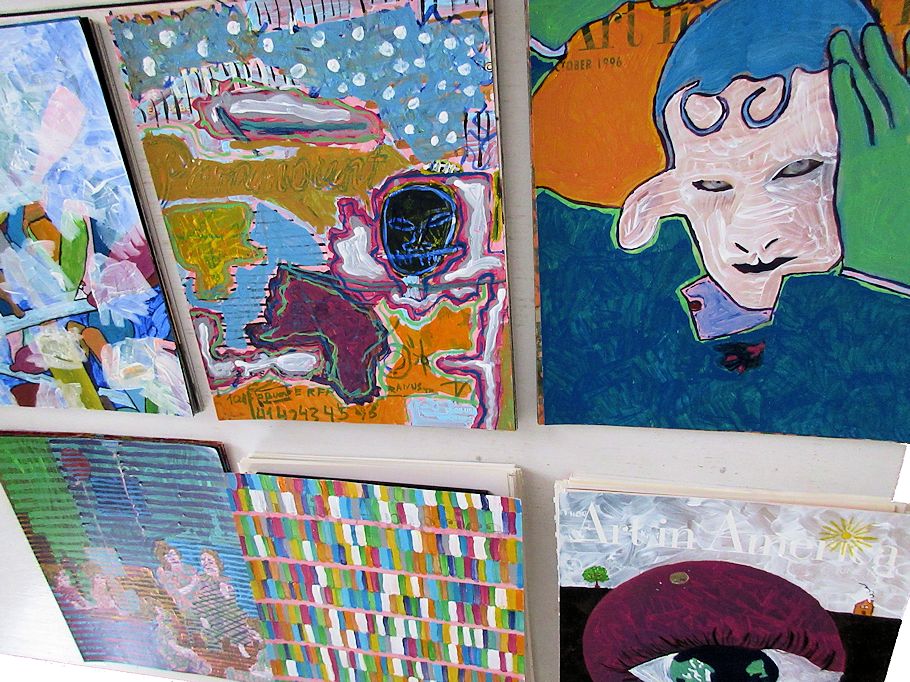
8 April 2023 Saturday
. . . . . .
|